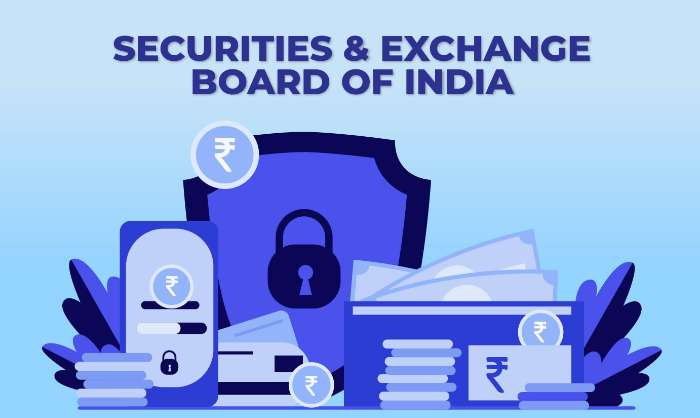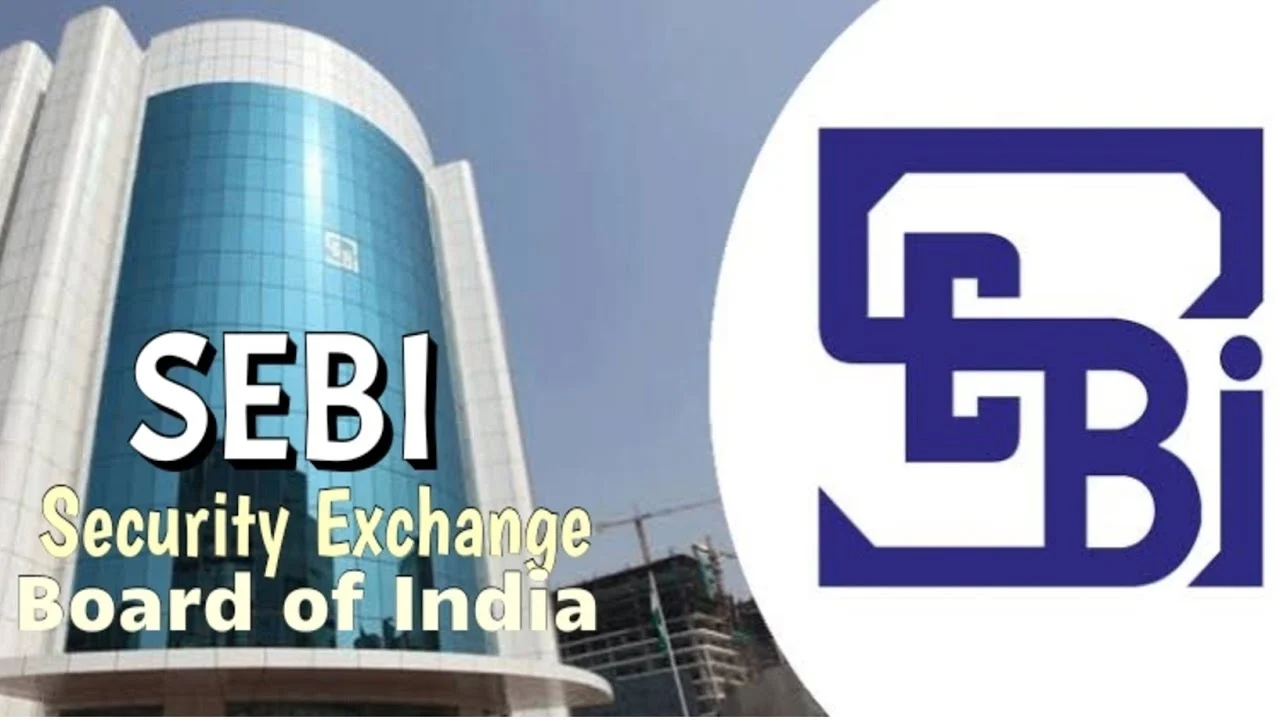SEBI is known as the Securities and Exchange Board of India, it is an essential financial institution in the landscape of India’s financial market. It is a sort of guardian that supervises and manages the working of the securities market in the nation and this makes sure about investor protection, fairness, and transparency. Basically, it protects and safeguards investors’ interests.
Suppose you are in a huge marketplace where individuals like to buy and sell goods and services such as fruits, clothes, bonds, and other trade stocks. Now this is called the stock market, where people exchange bonds and stocks in the marketplace.
While it is not necessary to understand every market, some are helpful to be aware of. For instance, there are two different markets for stocks, which are mostly used by regular investors: the “primary market” and the “secondary market.”
The market where businesses sell investors their recently issued shares is known as the primary market.
However, previously issued equities are traded, purchased, and sold on the secondary market, which is a market between investors.
History of SEBI:-

Before SEBI, the securities market in India was like a puzzle with missing pieces. Different government bodies tried to regulate it, but there was no single authority in charge. This led to confusion and problems.
In 2014, things changed. The Indian government gave SEBI more power. Now, SEBI could do things like search for evidence and punish those who cheated in the markets. This was a big step towards making the market fairer and safer for everyone.
Today, SEBI is like a guardian for the Indian securities market. It makes sure that everyone plays by the rules. If someone tries to cheat or manipulate the market, SEBI steps in to stop them. It’s like a referee in a game, making sure everyone follows the rules.
SEBI’s job is important because it helps investors feel safe. When people invest their money, they want to know that the market is fair and transparent. SEBI’s regulations make sure that companies and traders act honestly. This helps investors trust the market and encourages more people to invest.
Over the years, SEBI has become famous worldwide for its work. It’s seen as a model regulator, showing other countries how to keep their markets in check. Its rules and actions have made the Indian securities market stronger and more reliable.
In the end, SEBI’s history is a story of progress. From a market filled with uncertainties to a well-regulated space, SEBI has come a long way. And as it continues to evolve and adapt, it will keep safeguarding the interests of investors and ensuring the integrity of the Indian securities market.
Objectives of SEBI:-
– Regulate the functioning of the Indian capital market.
– Safeguard investors’ interests by monitoring and regulating the securities market.
– Create a safe investment environment through the implementation of rules, regulations, and investment-related guidelines.
– Prevent malpractices in the Indian stock market.
– Ensure transparency, fairness, and integrity in securities transactions.
– Promote investor education and awareness.
– Facilitate the development of the securities market to support economic growth.
What is the Financial Market?
Administrators and participants make up the financial market infrastructure, which is a framework used to clear, settle, and record financial transactions involving funds, assets, and contracts. To control possible threats to the financial market and its members, financial market infrastructures often include risk management systems, system facilities, and common regulations and processes for all participants.
Fund settling systems, equities settlement systems, clearing houses, and transaction information stores are examples of financial markets.
- An arrangement that handles both the receipt and the payment of funds is referred to as a “fund settlement system.”
- A system that manages the delivery and preservation of securities is referred to as a “securities settlement system”.
- The term “clearing institution” describes a system that handles transactions involving derivatives, securities, etc., and their settlement and clearing. Transfers between participants are cleared by the clearing organization by substituting the relationships between every participant and the clearing organization for the debt and credit ties between members.
- The term “trade information store” describes a system that gathers, maintains, and disseminates transaction data for over-the-counter derivative trades, among other things.
Financial market infrastructure, as previously highlighted improves the quality of the markets it services by efficiently processing the clearing, settlement, and recordkeeping of multiple financial transactions involving many people or investors. It is crucial to maintain the stability and support the operations of the financial system and market.
A short-term money market is one where exchanged products have a duration of one year or less; on the other hand, a long-term money market is one where sold products have an expiration period of one year or more. Participating entities include banks, securities firms, insurance providers, businesses, the federal government, municipal governments, and others.
A major platform for performing financial operations in the short-term money market. Moreover, the open market and the market between banks include the short-term money market. Only financial companies deal with the interbank market, where the call market is the primary market. Open markets allow for the participation of general enterprises, financial institutions, and other parties.
Financial markets, in a more general sense, refer to the marketplaces for purchasing and selling financial items, including stock markets.
What does the term “market” mean? – The foreign currency, stock, and bond markets
It is challenging for a stock seller to find a buyer, but if they engage in a “market” wherein orders to buy and sell are gathered, they can locate a buyer and seller, with the price being set by the balance between the two transactions. The price will increase if more individuals want to purchase and decrease if more individuals want to sell.
Stated differently, a “market” might be defined as a “place” that links “buyers” and “sellers” of assets and funds, establishes a fair price for every activity, and supports ongoing transactions.
Due to the fact that a single transaction can now be completed in multiple markets across multiple nations due to globalization, exchanges are competing to draw participants and transactions by enhancing transaction convenience.
The bond, stock, foreign currency, and other well-known markets in the financial sector are not to be overlooked; nevertheless, asset, futures, and options markets, as well as the derivatives market handling materials like gold, petroleum, and grain, are also crucial marketplaces for investment management.
What is IR service?
Businesses have increased their involvement in what is known as investor relations, or IR (investor relations), in current years. IR gives investors and shareholders information that is essential for making investments, like financial situations and gives them an advantage in raising money. A growing number of businesses are doing this by adding IR-specific web pages to their main home pages.
Services that assist with business investor relations (IR) efforts are referred to as IR services. To increase productivity and decrease the workload associated with IR activities, several businesses hire IR services to run IR sites and offer them to investors.
Organizational Structure of SEBI
SEBI’s organizational structure is corporate in nature, with various levels of leadership and several departments overseeing different aspects of its functions. Here’s an overview:
Board of Directors:
– The highest authority, including:
– Chairman: Appointed by the Indian Union Government.
– Two members from the Union Finance Ministry.
– One member from the Reserve Bank of India (RBI).
– Five members appointed by the Union Government of India.
Senior Management:
– Oversees the overall functioning of SEBI.
Department Heads:
– Supervise individual departments.
Departments:
- Information Technology Department
- Foreign Portfolio Investors and Custodians
- Office of International Affairs
- National Institute of Securities Market
- Investment Management Department
- Commodity and Derivative Market Regulation Department
- Human Resource Department
Other Departments:
– Legal, financial, and enforcement-related affairs are managed by other crucial departments.
Hierarchical Structure:
– Each department is led by its respective head and operates within a defined hierarchy.
SEBI’s organizational setup ensures effective governance and oversight across various domains, allowing it to fulfill its regulatory mandate and safeguard the interests of investors in the Indian securities market.
Functions and Powers of SEBI:-
SEBI, as a regulatory body, performs crucial functions and exercises significant powers to ensure the integrity and smooth functioning of the securities market in India. Here’s a breakdown of its functions and powers:
Functions of SEBI:
- Protecting the interests of Indian investors in the securities market.
- Promoting the development and efficient functioning of the securities market.
- Regulating the business operations of the securities market.
- Providing a platform for various market participants such as portfolio managers, stockbrokers, investment advisers, etc.
- Regulating tasks related to depositors, credit rating agencies, custodians of securities, foreign portfolio investors, and other market participants.
- Educating investors about securities markets and intermediaries.
- Prohibiting fraudulent and unfair trade practices within the securities market.
- Monitoring company takeovers and acquisitions of shares.
- Keeping the securities market efficient and up-to-date through research and developmental tactics.
Powers of SEBI:
- Passing judgments in cases of fraud and unethical practices in the securities market.
- Facilitating transparency, accountability, and fairness in the market.
- Examining the Book of Accounts and other vital documents to gather evidence against violations, and imposing rules, passing judgments, and taking legal actions against violators.
- Formulating rules and regulations to protect the interests of investors, covering areas like listing obligations, insider trading regulations, and disclosure requirements.
- Eliminating malpractices in the securities market through the formulation of rules and regulations.
Supervision:
– The Supreme Court of India and the Securities Appellate Tribunal oversee SEBI’s functions and related decisions, ensuring accountability and fairness in its regulatory actions.
Through its functions and powers, SEBI plays a crucial role in maintaining the integrity, transparency, and efficiency of the securities market, thereby safeguarding the interests of investors and promoting investor confidence in the market.
Is it simple to use and find data?
As you know, IR sites by their very nature offer a lot of information. We have highlighted the essentials that you should remember when utilizing an IR site. As a result, the management system must be designed to prevent both viewers and content from being confused on the website.
Furthermore, news, media releases, and info regarding financial results must be updated immediately on IR sites. As a result, it’s critical to design websites that are easy to use and require minimal work on the part of both site owners and users.
Individual investors
This is a collection of people who participate in investing but are not connected to any one business. Diverse categories of traders exist, including day traders who purchase and trade stocks in a single day in an attempt to profit, as well as medium- to long-term dealers who buy and sell with a focus on dividend payments and shareholder benefits. Some work in the investment industry.
Investors with institutions
Large-scale investors that take money from clients and put it in stocks and bonds include government financial institutions and private businesses like pension funds, banking institutions, trust banks, and life and non-life insurance firms. The bulk of shares in listed businesses are held by institutional investors, which gives them control over the market.
International investors
Refers to foreign investors both institutional and private who do not live in the country Despite being foreign people and businesses, they currently hold a sizable portion of the stock market and are predicted to keep growing in the coming years. For them to be able to access the information about your firm, your investor relations website must be competent and provide support.
Is the information substantial?
Financial and performance data is often the stuff that is essential for an investor relations website. In addition to the obvious importance of financial and performance data in determining a company’s health, other factors to take into account while making investment choices are “the type of business you are doing” and “the degree of impact that business has on society.” Content that explains concepts such as people’s perceptions of the future and plans for moving toward it is also necessary.
The idea that businesses must give back to society in addition to making money has also gained support in recent years.
Mutual Funds Guidelines of SEBI
SEBI’s guidelines for managing mutual funds in India, outlined in the Securities and Exchange Board of India Regulations, 1996, are crucial for ensuring transparency and accountability in the mutual fund industry. Here’s a breakdown of these guidelines:
Registration:
– Mutual funds must register under the Trusts Act, 1882, to operate in India.
– Funds dealing exclusively with the money market must also register with the RBI.
Asset Management Companies (AMC):
– AMCs, responsible for managing mutual funds, must be approved by SEBI.
– Trustees of the AMC ensure compliance with regulations and monitor fund performance.
Regulations:
– SEBI has issued regulations for sponsors, asset management companies, and shareholders to adhere to.
Key Regulations:
1. Limit on Shareholding: Sponsors or their associates cannot hold 10% or more of total shareholding or voting rights in an AMC or other mutual funds.
2. Representation on Boards: An AMC cannot be represented on any other mutual fund’s board.
3. Sectoral Index Weights: No single stock in a sectoral or thematic index can have over 35% weight, and the cap is 25% for other indices.
4. Weight of Top Constituents: The aggregate weight of the top three constituents of an index cannot exceed 65%.
5. Trading Frequency: Individual index constituents must have a trading frequency of at least 80%.
6. Liquid Assets: Each liquid scheme must invest at least 20% in liquid assets like treasury bills, government securities, etc.
7. Annual Compliance: Mutual funds must adhere to SEBI guidelines annually and publish their index constituents on their websites.
These guidelines ensure that mutual funds operate within a framework that prioritizes investor interests, transparency, and market stability. Compliance with these regulations fosters trust and confidence in the mutual fund industry among investors.
FAQs:
1. What is SEBI and its role in the financial market?
– SEBI is the Securities and Exchange Board of India, overseeing India’s securities market to ensure investor protection, fairness, and transparency.
2. What are the primary and secondary markets in the stock market?
– The primary market is where businesses issue new shares, while the secondary market involves the trading of previously issued shares among investors.
3. How did SEBI evolve over the years?
– SEBI’s history showcases its transformation from an unregulated market to a well-regulated institution, ensuring market integrity and investor confidence.
4. What are the objectives of SEBI?
– SEBI aims to regulate the capital market, safeguard investors’ interests, promote transparency, prevent malpractices, and facilitate market development.
5. What comprises the financial market infrastructure?
– Financial market infrastructure includes systems for clearing, settling, and recording financial transactions, ensuring efficiency and stability in the market.
6. Who are the participants in the financial market?
– Participants include individual investors, institutional investors, and international investors, each playing a vital role in the market.
7. What is the significance of investor relations (IR) services?
– IR services provide essential information to investors, enhancing transparency and facilitating investor engagement with businesses.
8. What are the key regulations for managing mutual funds as per SEBI guidelines?
– SEBI’s regulations include limits on shareholding, representation on boards, sectoral index weights, trading frequency, liquid assets, and annual compliance.
9. Why are SEBI’s mutual funds guidelines important?
– These guidelines ensure transparency, accountability, and stability in the mutual fund industry, fostering investor trust and confidence.
10. How do SEBI’s regulations impact the mutual fund industry?
– SEBI’s regulations promote investor protection, market integrity, and fair practices, contributing to the overall growth and stability of the mutual fund industry.





